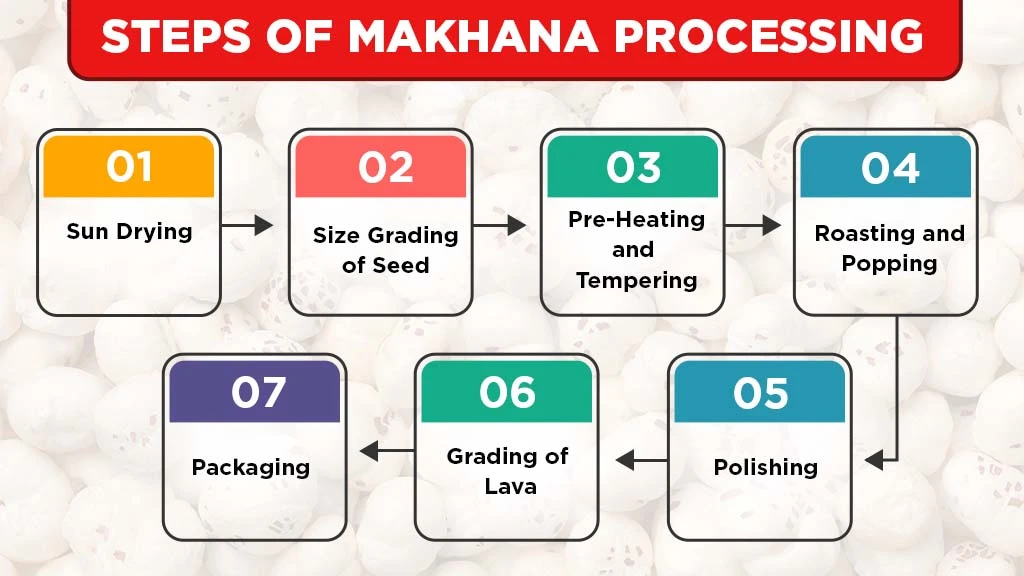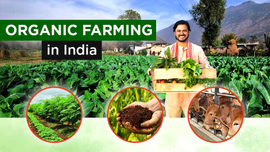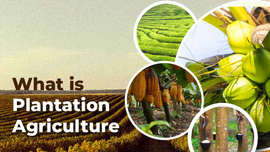Makhana Production in India: How is it Cultivated, Benefits & India’s Scenario

Makhana is one of the popular low-calorie snacks known for its taste and immense health benefits. It is an aquatic crop from water lily family. If you are wondering that how Makhana is made, then today’s blog explores all about Makhana production, how it is cultivated, exports and and its health benefits.
Table of Contents
- What is Makhana and How is it Cultivated?
- Makhana Production, Consumption & Exports Scenario in India
- What are the Benefits of Makhana?
- What are the Steps of Makhana Processing?
- Government Support for Makhana Production, Processing & Distribution
- Economics of Makhana Cultivation
What is Makhana and How is it Cultivated?
Makhana, also known as lotus seeds, are common nutritious ingredient used in Indian households for so many years. The scientific name of Makhana is Euryale ferox and it belongs to the family Nympheaceae. It is also known as gorgon nut or fox nut. Makhana usually grown in stagnant perennial water bodies like ponds, lakes, swamps, etc. at a depth of 4-6 ft or in the field system. A single Makhana plant produces about 100 seeds and there are about 10,000 plants in one ha of pond area.
Makhana Production, Consumption & Exports Scenario in India
India is the largest producer of Makhana in the world, with a demand in both domestic and international markets. In 2025, Makhana cultivation has expanded from approximately 13,000 to 35,000 hectares across multiple states. Bihar, West Bengal, Manipur, Tripura and Assam are the major producers of Makhana. Being the major producer of Makhana, Bihar produces approximately 80% of the total Makhana production of processed Makhana which comes from Darbangha, Madhubani, Purnia, and Katihar districts alone.
With time, the consumption of Makhana has been increasing and people in India are consuming more Makhana as a nut due to health consciousness and many dietary measures. Makhana can be eaten as a roasted snack and used in many Indian recipes and sweets.
If we talk about the export scenario, India exported around 12,000 Metric Tonnes of Makhana in recent years. But, seeing the rapid demand of Makhana, we can say that it is yet to flourish in coming years as many consumers preferring nutrient-rich and locally sourced snacks as a part of their clean, sustainable eating lifestyle.
What are the Benefits of Makhana?
Makhana is not only delicious in taste but is a type of nut which also has many medicinal and health benefits. Some of the major benefits of Makhana includes:
- Nutrient-rich: Makhana has a high nutritional value due to the presence of carbohydrates, fibre, protein, and important minerals like magnesium, potassium, and phosphorus which boost the overall energy.
- Weight Loss: It is a low-calorie snack which can be consumed as an alternative to processed snacks. This would aid in weight management, sugar spikes, etc. It also offers a feeling of fullness due to its high fiber content.
- Regulate Blood Sugar: Makhana also helps to regulate blood sugar as it has low glycemic index and high fiber.
- Rich in Antioxidants: It is also rich in antioxidants which helps neutralize free radicals and prevent oxidative stress, which can cause cellular damage.
- Helps in Digestion: It is a highly digestive snack which prevents constipation. It also aids in detoxification, supporting liver function.
What are the Steps of Makhana Processing?
Makhana processing contains sun drying, size grading of seed, pre heating & tempering, roasting & popping, polishing, grading of lava and packaging. Have a look below to get a clear picture:

Government Support for Makhana Production, Processing & Distribution
As it has a huge commercial demand, the Government of India announced to set up a Makhana Board for Bihar to increase its production, processing, value addition, and organizational and marketing of FPOs (Farmer Producer Organizations). Makhana has also received a GI tag by the government.
With ICAR, the government of India also introduces a special Makhana seed called ‘Swarna Vaidehi’. This seed can be grown just like paddy. It makes intercropping easier and open new possibilities for farmers with limited land.
Economics of Makhana Cultivation
The cultivation of Makhana has immense potential for enhancing the economic status of farmers who are particularly engaged in its cultivation.
The costs and returns from cultivation of Makhana is very important. This can be calculated among two variables, the fixed cost which includes the pond rent, water requirements, etc. and the operational costs which include the cost of pesticides, fertilizers, seeds, etc. Makhana plant produces about 100 seeds and there are about 10,000 plants in one ha of pond area. On an average, the benefit cost ratio of Makhana ranges between 1.52 to 2.16.
From the packaging methods and a vast improvement for supply to both retails as well wholesale segment, Makhana producers can now fetch much better prices in the market.
Frequently Asked Questions On Makhana Production in India: How is it Cultivated, Benefits & India’s Scenario
1. Who is the largest producer of Makhana in India?
Bihar is the largest producer of Makhana in India.
2. Which city is famous for Makhana?
Madhubani city in Bihar is famous for Makhana.
3. Why is Makhana so costly in India?
Makhana as a superfood has an increasing demand in India that is why it is mostly on a costlier side.
4. Is Makhana cultivation profitable in India?
Yes, Makhana cultivation is profitable venture in India.


Related Blogs












